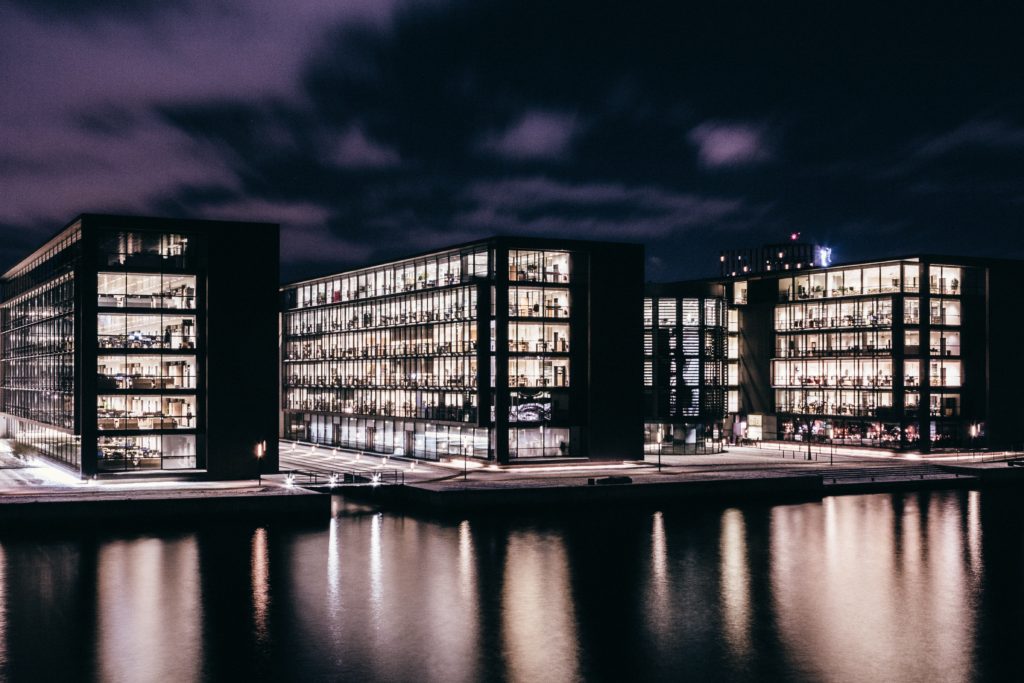Five Factors that Affect the ROI of Your Commercial Property

Investing in commercial real estate can be a fun and exciting business. You get to transform buildings from something unwanted into to something beautiful, productive, and profitable. But it can be a risky business, too. The success of your commercial real estate investment all depends on its resale value.
But what causes the return on your investment to go up and down? How do you balance expenses versus potential value?
Let’s take a look.
The Build Out
Your location’s build out is a deciding factor in your commercial real estate investment’s future success. What industry should you build it out for? Which one will give you the most return on your expenses?
While it may make sense to wait on the build out until you have a potential buyer for some industries (the healthcare industry for example), a build out can really increase the value for your commercial real estate investment for relatively little expense.
Projects that add clear aesthetic value can include painting the hallways, renovating signage to increase visibility, or even updating entryways with flooring and lighting. A beautiful entryway makes a great first impression on a potential buyer and can instantly increase your return for relatively little input.
Location
Now, if you’ve already bought your commercial real estate investment, then you’re locked into your location. But if you haven’t bought your resale project yet, then you need to carefully consider the location.
What’s around your building? What industry has a large impact in this part of town? How far is the commute to major cities? Commuting systems?
This could have a major impact on your resale value. A building in a great location with a talented workforce to hire and customers waiting outside the door will clearly sell for more than one that is far from any major commuting routes, has little foot traffic, and has no interesting things to do in the area.
However, location can also depend on the industry. For example, buying a building that’s located near a large healthcare office park and building it out into a retail store wouldn’t make sense, just like buying a building near a mall and turning it into a corporate warehouse probably wouldn’t make sense, either. Your future plans for your building have to match the industries around it. Do they complement each other?
Demographics
Take a close look at the demographics of the area around your building. Is it well-educated? Are there think tanks, universities, or other idea-creating entities around?
You want your building to be surrounded by a hirable workforce that offers opportunity for potential tenants. If would-be tenants shy away from the area because the employee pool is thin there, then most likely your building will have relatively low value.
You also want to look at market growth in the building’s area. Have more shops, restaurants, and apartment buildings gone up recently? Has the population grown at all? Does it look like it will? Or, on the other hand, is the population declining and are shops beginning to close?
You’ll get the most value for your building if you catch an area on the upswing versus trying to catch the last bit of growth in a declining market.
Tenant Desirability
How much money is the building pulling in now? Does it have a steady and reliable community of good tenants who pay their rent on time and have plans to stay? Or does it struggle to rent out office space and attract tenants who are just looking for a cheap place to set up shop?
You can learn a lot about the future of your building by looking at its past. It’s going to be much harder to turn a tenant population around 180 degrees and begin attracting well-paying, class A tenants when the building has only been rented sporadically by less desirable tenants in the past.
But if your building can display a history of excellent visibility for tenants whose businesses have grown and flourished, then your building will be more profitable and have an easier time attracting tenants in the future.
Building Efficiency
When you’re setting up a commercial real estate investment for resale, you need to consider its operational efficiency. Does it cost a fortune to heat it in the winter and cool it in the summer? If so, that’s not exactly a selling point for future owners.
Take the time to install the little things that make your building more efficient – or, in some cases, the big things. Switch out lightbulbs for energy-efficient LEDs and try your best to get fixed-rate electricity contracts. Take a close look at your HVAC system – is it set up for success or is your furnace starting to reach the end of its lifetime?
Your commercial real estate investment will be much more profitable if the future owner sees a lean, mean machine that’s set up to cost them the least amount in day-to-day operational expenses.
Get the Guidance You Need
When it comes to buying your commercial real estate investment, building it out, and selling it, you need to know what you’re doing. Without the right guidance, it can be hard to get a good ROI.
AushCo has been working in the Maryland commercial real estate industry since 2002. We’ve worked in commercial real estate investment, brokerage, property management, and can offer you customized guidance to meet your CRE goals.
Don’t wait until it’s too late. AushCo is here to help you get the best ROI on your commercial real estate investment.
